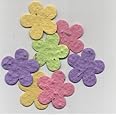Art has always been a medium through which emotions, thoughts, and cultural values are expressed. Among the various subjects that artists choose to portray, flowers hold a unique place, often symbolizing beauty, transience, and connection to nature. Large flower art, in particular, has gained prominence in contemporary art, serving as a striking visual element in both public spaces and private collections. This article delves into the symbolism and inspiration behind large flower art, exploring its historical roots, cultural meanings, and modern interpretations.
The Cultural Significance of Flowers in Art

Flowers have been a source of inspiration across cultures and epochs. Their ephemeral beauty often serves as a metaphor for life, love, and mortality. Here are some key points regarding the cultural significance of flowers in art:
- Historical Roots: From ancient Egyptian hieroglyphics to the elaborate floral still lifes of the Dutch Masters, flowers have been depicted in various forms throughout history.
- Symbolism: Different flowers carry unique meanings. For instance, roses symbolize love, while lilies often represent purity.
- Religious Context: Flowers are frequently used in religious art, symbolizing divine beauty and the transient nature of human life.
The enduring presence of flowers in art reflects humanity’s deep-rooted connection to nature and the various meanings we ascribe to different blooms.
Large Flower Art: A Contemporary Phenomenon
In recent years, large flower art has surged in popularity, appearing in urban landscapes, gallery exhibitions, and even digital platforms. This trend can be attributed to several factors:
- Public Engagement: Large-scale floral installations invite interaction and can transform public spaces, making art accessible to a broader audience.
- Environmental Awareness: As conversations around nature and sustainability grow, artists are using large flower art to highlight the beauty of nature and the importance of conservation.
- Visual Impact: The sheer size of large flower art creates an immersive experience, drawing viewers in and inviting them to contemplate the work’s deeper meanings.
Symbolism in Large Flower Art
Large flower art often serves as a canvas for exploring themes of growth, decay, and the interconnectedness of all living things. The symbolism of flowers within these large-scale artworks can be profound:
- Growth and Renewal: Flowers are often seen as symbols of new beginnings, representing the cycle of life. Large flower art can evoke feelings of hope and renewal.
- Transience: Just as flowers bloom and wither, large flower art can remind viewers of the fleeting nature of life and beauty.
- Connection to Nature: In an increasingly urbanized world, large flower art serves as a reminder of our connection to the natural environment, urging us to cherish and protect it.
Case Studies: Notable Large Flower Art Installations

Several artists and installations have made significant contributions to the world of large flower art. Below are a few notable examples:
1. Jeff Koons’ “Tulips”

Jeff Koons is a contemporary artist known for his large-scale sculptures that combine pop culture and fine art. His piece “Tulips,” a gigantic stainless-steel sculpture, captures the essence of flowers while incorporating themes of innocence and nostalgia. The shiny surface reflects the surroundings, inviting viewers to engage with the artwork in a personal way.
2. Yayoi Kusama’s “Flower Obsession”

Yayoi Kusama, a Japanese artist, is celebrated for her immersive installations that often feature large flowers adorned with her signature polka dots. “Flower Obsession” transforms spaces into vibrant environments that explore themes of infinity and the interconnectedness of life. Kusama’s work encourages viewers to reflect on their relationship with nature and the universe.
3. The Flower Carpet in Brussels

Every two years, the Grand Place in Brussels is transformed into a stunning flower carpet made of begonias. Spanning 1,800 square meters, this ephemeral artwork symbolizes community and tradition, showcasing the beauty of flowers while bringing people together. The event attracts hundreds of thousands of visitors, highlighting the power of large flower art to evoke joy and wonder.
The Role of Technology in Large Flower Art
As technology advances, so does the potential for artists to create large flower art in innovative ways. Digital art, augmented reality, and artificial intelligence are redefining how we perceive and interact with floral themes:
- Digital Installations: Artists are utilizing digital displays to create dynamic floral art that changes over time, pushing the boundaries of traditional flower art.
- Augmented Reality: AR technology allows viewers to experience large flower art in new dimensions, creating a dialogue between the physical and digital realms.
- 3D Printing: This technology enables the creation of intricate floral sculptures that were previously unimaginable, allowing for greater artistic expression.
The Psychological Impact of Flower Art

Research has shown that exposure to nature and floral imagery can have a positive impact on mental health. Large flower art can evoke a range of emotions and psychological benefits, including:
- Stress Reduction: Studies have found that viewing floral art can lower stress levels and promote relaxation.
- Enhanced Creativity: Engaging with vibrant floral imagery can stimulate creative thinking and inspire new ideas.
- Improved Mood: The presence of flowers has been linked to increased feelings of happiness and well-being.
Conclusion: The Enduring Allure of Large Flower Art
Large flower art serves as a powerful medium for exploring themes of beauty, transience, and our connection to nature. Through its rich symbolism and contemporary relevance, this art form invites us to reflect on our relationship with the environment and the emotions that flowers evoke within us. From historic roots to modern interpretations, the allure of large flower art continues to captivate audiences worldwide.
As we move forward in an increasingly urbanized world, the significance of large flower art will likely grow, reminding us of the beauty that exists in nature and our responsibility to preserve it. Whether through installations in public spaces or innovative digital creations, large flower art maintains its place as a vibrant and meaningful expression of humanity’s connection to the natural world.